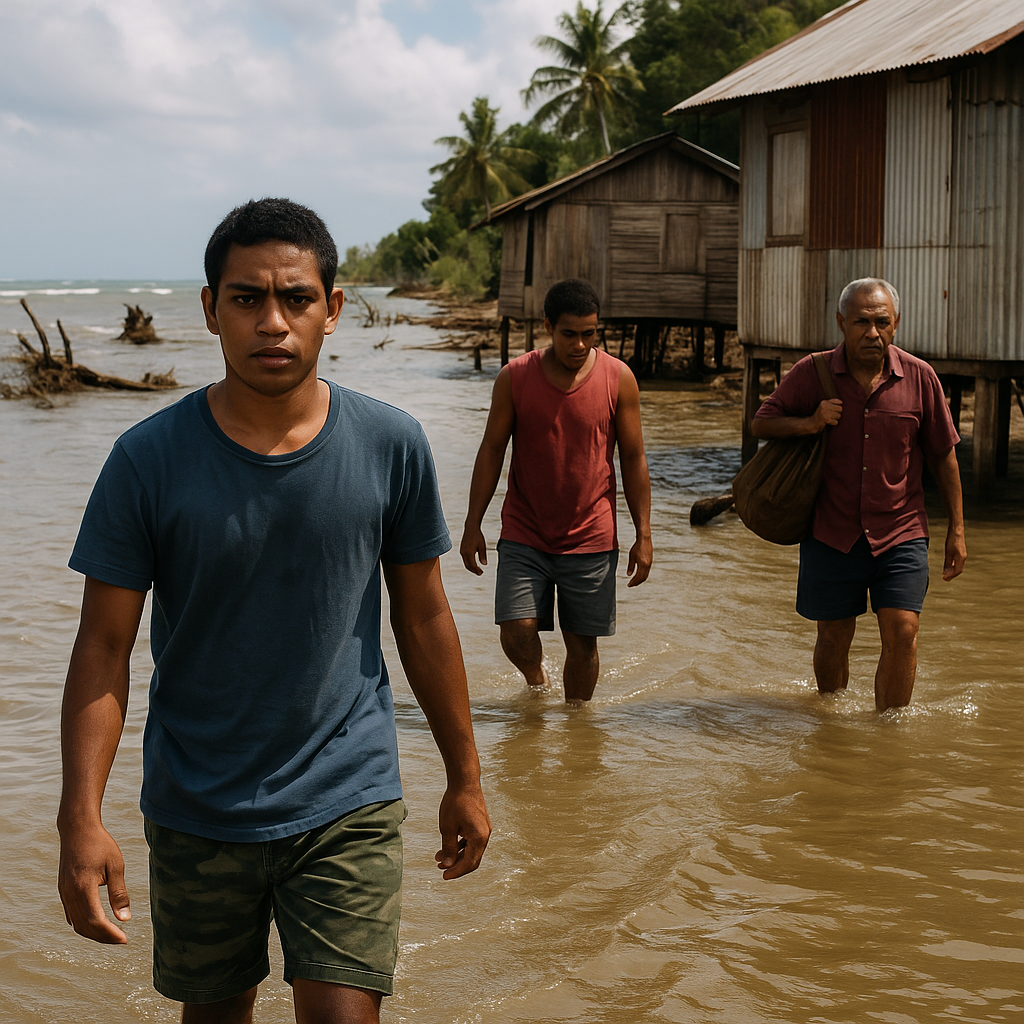Philippines Launches $874M Pagkilos Project to Boost Climate and Disaster Resilience
The project’s Filipino name, “Pagkilos”, meaning action, reflects the government’s proactive strategy to engage communities at the frontlines of climate and disaster risks.

- Country:
- Philippines
In a bold step toward strengthening disaster resilience and combating climate change impacts, the Philippines has launched the Pagkilos Project—a community-driven development initiative backed by the World Bank with an investment of $874.35 million. The project aims to directly reduce the vulnerability of approximately 18 million households through participatory local planning, climate-smart infrastructure, and sustainable livelihood solutions.
The project’s Filipino name, “Pagkilos”, meaning action, reflects the government’s proactive strategy to engage communities at the frontlines of climate and disaster risks. With funding support that includes a $700 million loan from the International Bank for Reconstruction and Development (IBRD) and $174.35 million from the Philippine national government, Pagkilos will support long-term resilience planning in the country's most climate-vulnerable areas.
Strategic Focus: Community Leadership in Risk Preparedness
At the heart of Pagkilos lies a transformative shift: placing communities in charge of their own climate and disaster resilience strategies. Using a community-driven development (CDD) approach, the initiative empowers citizens, especially those from the poorest and most exposed municipalities, to identify local hazards and design resilience solutions tailored to their environments and social contexts.
“Communities play a critical role in preparing for and responding to disasters,” said Zafer Mustafaoğlu, World Bank Division Director for the Philippines, Malaysia, and Brunei. “Their ability to anticipate risks, organize themselves, and collaborate with local and national authorities is essential for effective climate change and disaster risk preparedness and recovery efforts.”
The Department of Social Welfare and Development (DSWD) will lead the implementation, promoting inclusive planning and voluntary participation in budgeting and sub-project execution. Special attention will be given to Indigenous Peoples, women, and low-income families, including beneficiaries of the Pantawid Pamilyang Pilipino Program (4Ps), the country’s flagship cash transfer initiative for poverty alleviation.
Geographic Coverage: Reaching the Most Vulnerable
Pagkilos will prioritize 500 municipalities across 49 provinces, chosen for their high exposure to climate hazards and poverty levels. Notably, 177 of these municipalities have Indigenous populations exceeding 10 percent, meaning the program will reach around 33 percent of the Philippines’ total Indigenous Peoples population.
This targeted geographic strategy ensures that vulnerable, marginalized, and underserved populations are not only protected from climate-related threats but also empowered as decision-makers in resilience planning.
Resilience Investments: Infrastructure Meets Nature-Based Solutions
One of the most dynamic aspects of the Pagkilos Project is its broad definition of "resilience investments." These include a mix of hard infrastructure, nature-based solutions, and climate-resilient livelihoods, such as:
-
Flood and drought mitigation systems
-
Landslide and slope protection structures
-
Storm surge barriers and breakwaters
-
Retrofitting of schools, clinics, and public buildings
-
Erosion control systems, including check dams and ripraps
-
Community forests, wetlands, and marsh restoration
-
Water conservation systems and agroforestry projects
Additionally, Pagkilos will promote climate-smart agriculture, small-scale irrigation, and sustainable food production systems. These solutions not only reduce climate exposure but also create resilient livelihood pathways for rural and coastal communities.
“Investing in community-level resilience is crucial for a country like the Philippines that is highly vulnerable to climate change and natural disasters,” noted Ditte Marie Fallesen, World Bank Senior Social Development Specialist. “It safeguards lives, protects economic stability, and empowers local communities to recover swiftly and sustainably.”
Capacity Building: Training Local Actors for Sustainability
Beyond infrastructure, Pagkilos places a heavy emphasis on capacity building. Community volunteers and local government units (LGUs) will receive technical assistance and training to manage and implement sub-projects. This includes modules on:
-
Climate risk mapping
-
Environmental and social safeguards
-
Budgeting and resource mobilization
-
Community organizing
-
Monitoring and evaluation
This integrated model ensures that the benefits of Pagkilos are sustainable, scalable, and replicable in future development programs.
A Disaster-Prone Country in Urgent Need of Solutions
The Philippines ranks consistently among the top countries in the World Risk Index, making it one of the most disaster-prone nations globally. The country is frequently battered by typhoons, floods, earthquakes, droughts, and volcanic eruptions. In 2023 alone, over 2.1 million people were displaced due to two major hydroclimatic disasters, out of 2.6 million total disaster-related displacements.
These grim statistics underscore the need for innovative, locally driven solutions like Pagkilos. The World Bank’s support reflects growing recognition that bottom-up resilience building is not just effective—it is essential.
Looking Ahead: A Model for Regional Resilience
Pagkilos is more than a project—it represents a model of community-led adaptation that can be replicated across the Southeast Asian region and beyond. With a strong governance framework, inclusive participation, and a comprehensive investment strategy, it positions the Philippines as a regional leader in resilience planning and climate action.
The project’s launch comes at a time when countries worldwide are grappling with the escalating impacts of climate change. In this context, Pagkilos stands out as a practical and people-centered model for how national governments, development institutions, and communities can collaborate to build a more resilient future.
ALSO READ
Cambodia and Lao PDR Strengthen Early Warning Systems to Save Lives, Livelihoods
Run-of-river hydropower: The low-impact energy solution Southeast Asia needs now
Eritrea’s Village Dams Turn the Tide on Drought, Boost Food Security and Rural Livelihoods
Modernizing Himachal's Dairy Industry: A New Dawn for Rural Livelihoods
Tariffs and Transshipments: Navigating New Trade Challenges with Southeast Asia










